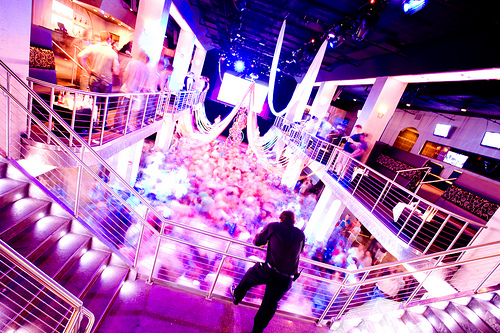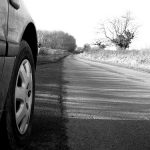Public transportation key to keeping drunks off the roads
Anyone who’s ever been egged on by friends to do shots might know this instinctively, but science is now backing it up: just the presence of super-intoxicated friends may encourage clubgoers to get drunker than they normally would. Not only that, but knowing they won’t be getting behind the wheel also encourages partiers to imbibe more. A recent study, “Method of Transportation and Drinking Among Club Patrons,” aims to discover the dynamics of drinking and driving.

Image from Tony Webster
While the majority of research in the U.S. on booze and transportation has centered on understanding and preventing drunk driving, this study focuses on another important principle: “Effective interventions need to target passengers as well as drivers.” Studying the dynamics of drinking may help reduce risks among young adults age 18-25 in particular. Adults in this group are at the highest risk for crashes with drivers under the influence. While campaigns against drunk driving have been largely effective, they’ve also been criticized for sending the message that “as long as you don’t drink and drive or ride with an impaired driver, you can drink to excess while out for the evening and be safe.”
The researchers studied three different types of clubgoers: those who left on foot, by bike or by subway; those who were car or taxi passengers; and those who drove home to determine whether how much alcohol a partier drinks impacts their transportation choice, as well as their overall safety. The study’s authors collected data from these three different types of clubgoers as they entered and exited clubs over 71 nights at ten different clubs over 2010 to 2012. Each single participant gave the researchers information on himself or herself, plus on others in his or her party. The total headcount was 1,833. They tested clubgoers BAC both upon entering and on leaving the clubs, and also tracked method of transportation, social group characteristics, drug use and personal characteristics.
The researchers discovered just two characteristics that encourage partygoers to drink more, or to excess:
- not having to drive home, and
- having a friend who is “frequently drunk” in your party.
Clubgoers who know they have a guaranteed designated driver, taxi, or other route home that doesn’t involve them behind the wheel are drink more than they would otherwise. Even those who travel on foot are at risk for more, and more severe, pedestrian accidents involving vehicles, when walking while intoxicated. But there are other risks too: Nonviolent and violent crime are both more prevalent in the areas near bars and clubs.
So, what can be done? The study advocates better public health education to inform those who aren’t drinking and driving that heavy drinking can still result in major consequences such as pedestrian accidents and physical or sexual assault, even if they are at a lesser risk for drunk driving-caused disasters.
Related Posts
Category: Transportation

















